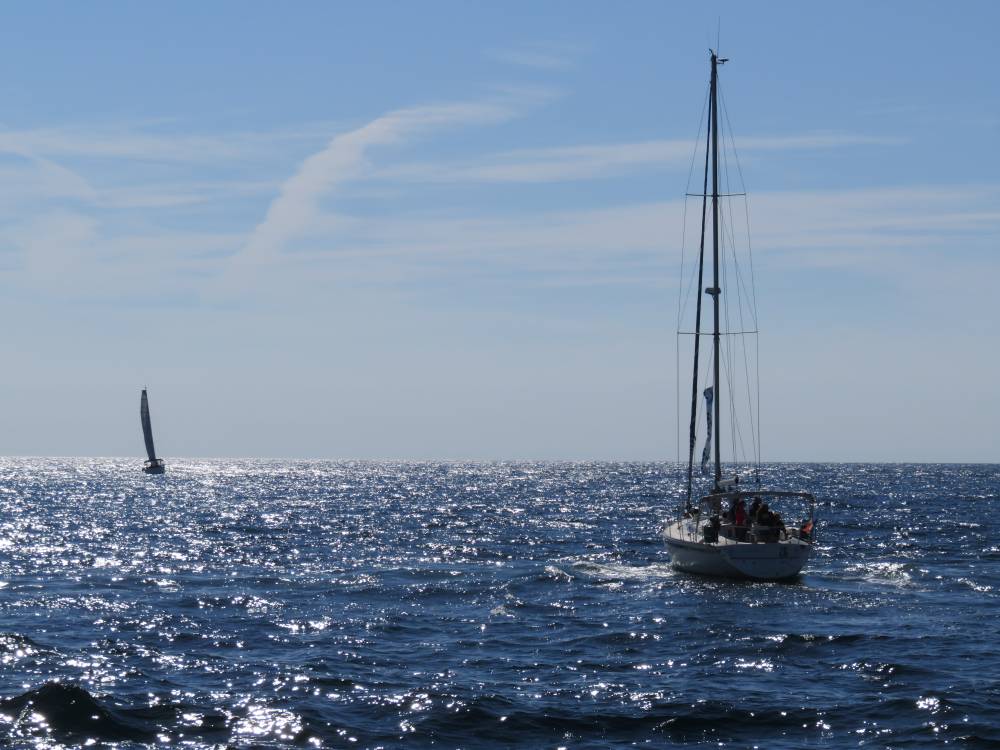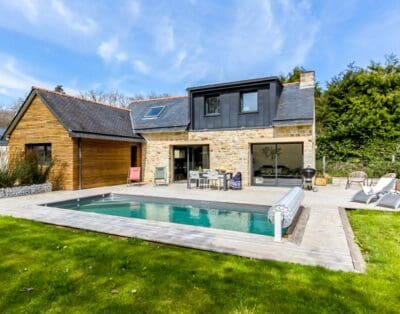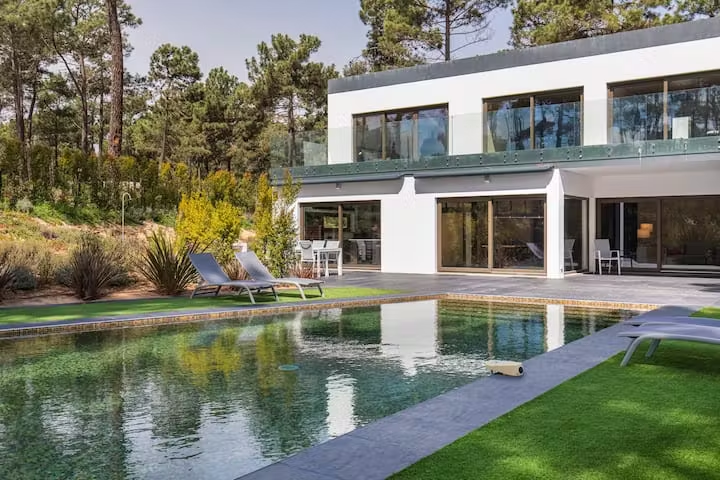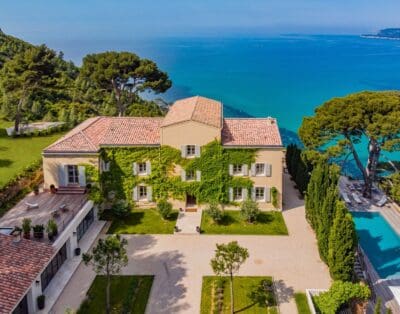LES SABLES-D’OLONNE: MAKING WAVES IN THE WORLD OF SAILING
A flotilla of boats trailed in the wake of a fleet of traditional long-keeled yachts and their skippers, competitors of the Golden Globe Race 2022 (GGR); all were heading through the now iconic ‘Channel’ connecting Port Olona’s race village to the open sea, leaving the ‘capital’ of ocean racing ‘Les Sables-d’Olonne’ to melt away into the landscape.
The GGR is described as the father of solo round the world events, one for the sailing purists, placing man and not machine at the heart of maritime exploration. It is deemed the most demanding ocean race in the world; an adventure to recreate the golden age of sailing by individually navigating their way around the globe, just as Sir Robin Knox-Johnston, the first ever winner of the race, had done in 1968/69 and the first man to sail solo, non-stop around the world.
Sounding the Claxon
It was he, alongside Don McIntyre (Founding President GGR) and Yannick Moreau (Mayor of Les Sables-d’Olonne) who sounded the claxon from the official start vessel, a French Navy training ship named ‘Guepard’, some 2.5miles off-shore which heralded the official start and point from which GGR Racers would now rely on sextants, paper charts, wind-up chronometers and a weather eye on their barometers, to lead them across oceans for some 9-months.
Other exacting rules of race entry, included using boats from 32-36 feet and built before 1988, making it a true story of man (and one women Kirsten Neuschafer of South Africa) against the elements, requiring exceptional skill and mental fortitude. It was fitting that these sixteen sailors got a rapturous send-off from the thousands of people who had lined the ‘channel’, many with feet dangling from port walls, waving and cheering, something they have now become accustomed to do for another world-famous race, the Vendée Globe, whose next edition will be in 2024.
The procession of many types of crafts brought plenty of pomp and pageantry to the occasion, which felt like a classic boat regatta or water festival; it was a chance for the town’s vintage fishing boats to show their support to GGR and the deep maritime heritage of the town, as they do during the Fisherman’s Festival ‘La Ch’noue En Bordee’. Every September, the festival flourishes with nautical parades of the town’s folk in period costume and the Bagad of Lann Bihoué, a Breton military pipe band, marching through Les Sables-d’Olonne’s oldest quartier ‘La Chaume’.
La Chaume – Fisherman’s Quarter
Outside of race or festival days is the right moment to explore ‘La Chaume’, the fisherman’s quarter; walk into the small café’s set back from the water’s edge, hidden within the narrow streets of lime-washed cottages, to find walls bedecked with black, white and sepia postcards of a bygone era and nautical ephemera. The postcards depict the old harbour, the fisherman, their wives and families bringing home their catch of cod, sardine and tuna fish.
It is on this side of the ‘Channel’ that other landmarks point to the earlier trades of salt, wine, wheat and sailcloth all still relevant in some way today. The 11th century Priory of Saint Nicolas was built by the monks of Sainte Croix de Talmont and has seen many reincarnations, today it is an exhibition venue. The Tower of Arundel was built in the 15th century forming part of Chateau St. Clair’s defences, now incorporating the Sea Museum. These are the first monuments every sailor departing and entering the mouth of the harbour are comforted by seeing.
It was these historic buildings, the skipper of our ‘catamaran’ part of the flotilla of boats accompanying the departure of the GGR competitors, positioned our vessel towards. Even as a mere passenger, having spent two-hours in the gentle swell of the Atlantic, it was easy to imagine the sense of ‘homecoming’ many centuries of sailors have felt, especially skippers from the GGR and Vendée Globe, having spent so long at sea and overcome so much.
Crossing the ‘Channel’ toward ‘Le Grand Plage’
Le Bus de Mer (water taxi) just takes a moment to deposit passengers from Le Chaume to Quai Rene, which is a short walk from one of Europe’s most spectacular beaches – Le Grand Plage. The sandy expanse arches around the bay and stretches for 3km. It is here that a microcosm of Vendaen life and lifestyle can be found in a single stroll; the beach is shared by traditionalists playing boules, walkers, runners and swimmers of all ages, many stopping to observe tribes of surfers catching waves or yoga practitioners contorting bodies creating momentary human art sculptures.
Just one street back from the elegant, south-facing bay and promenade of cafe’s, restaurants and boutiques, one can explore everyday life of ‘Les Sablais’, all intoxicatingly French, especially within ‘Les Marche Halles’; In 1889, architect Charles Smolski rebuilt the structure drawing inspiration from Gustave Eiffel and Victor Baltard; the elegant balustrades, Juliet balconies and over-arching canopy of cast iron and glass makes the building itself worthy of a visit, as much as the many stalls of fresh produce alongside the general hubbub of market life, that has seen trade on this site since 1810.
‘Les Marche Halles’ sits on the site of the old cemetery of Les Sables, as the building is almost within touching distance of the 17th century Notre Dame de Bon-Port Cathedral, a marvel of gothic and renaissance architecture and from which many streets converge, the ideal meeting point hence the many cafes and pâtisseries sitting at the feet of the church.
Active adventures in the Salt Marshes and beyond:
Several kilometres outside the centre of Les Sables, and the greater Vendée region offers some 1800km cycling trails. Part of this vast network of tracks is Marais Olonne, a string of salt marshes, centred on the ancient village of salt producers ‘Ille d’Olonne’. Walkers, share these narrow paths laid between the fish marsh and salt marsh, with cyclists and e-scooters, all with the same goal of taking in the diverse flora and fauna, from migratory birds to the odd group of grazing goats, unfazed by passers-by.
The flat landscape provides a sense of space, with perspective bringing into focus a solitary fisherman’s hut in the foreground and distant wind turbines sharing the panorama with the Church Spire of Saint Martin de Vertou. The spire was a visual landmark for which to head and belongs to ‘Ille d’Olonne’, one of many quaint villages which prompts a rest stop; especially as this tiniest of villages has a square with the grandest of names ‘Place Général de Gaulle’.
Within the region, one is never too far away or indeed too long from interacting with the water. Another way to get even closer to nature is by paddle-board, an almost zen-like experience, eliciting pure calm, with the only noise coming from the paddle entering the water or the watery landing of an egret. The patchwork of marsh canals was a welcome antidote to the nervous energy of the race village, and the constant flow of boats manoeuvring expertly into one of 1,500 berths that Port Olona provides its sailing community.
Homecoming
Les Sables-d’Olonne has used its maritime history as a means to develop its maritime future by being the transition point for the world’s most important solo sailing races and as importantly shining a light on the Côte de Lumière.
The GGR skippers have departed on their voyage “which human values and surpassing oneself are essential in order to face the elements and reach the end of the adventure” Mayor Yannick Moreau added; these sailors certainly dream of their return to Les Sables-d’Olonne and let’s hope we are all back to witness their homecoming.
For more information go to:
www.lessablesdolonne-tourisme.com
www.vendee-tourism.co.uk
www.admiralhotel.fr/en







